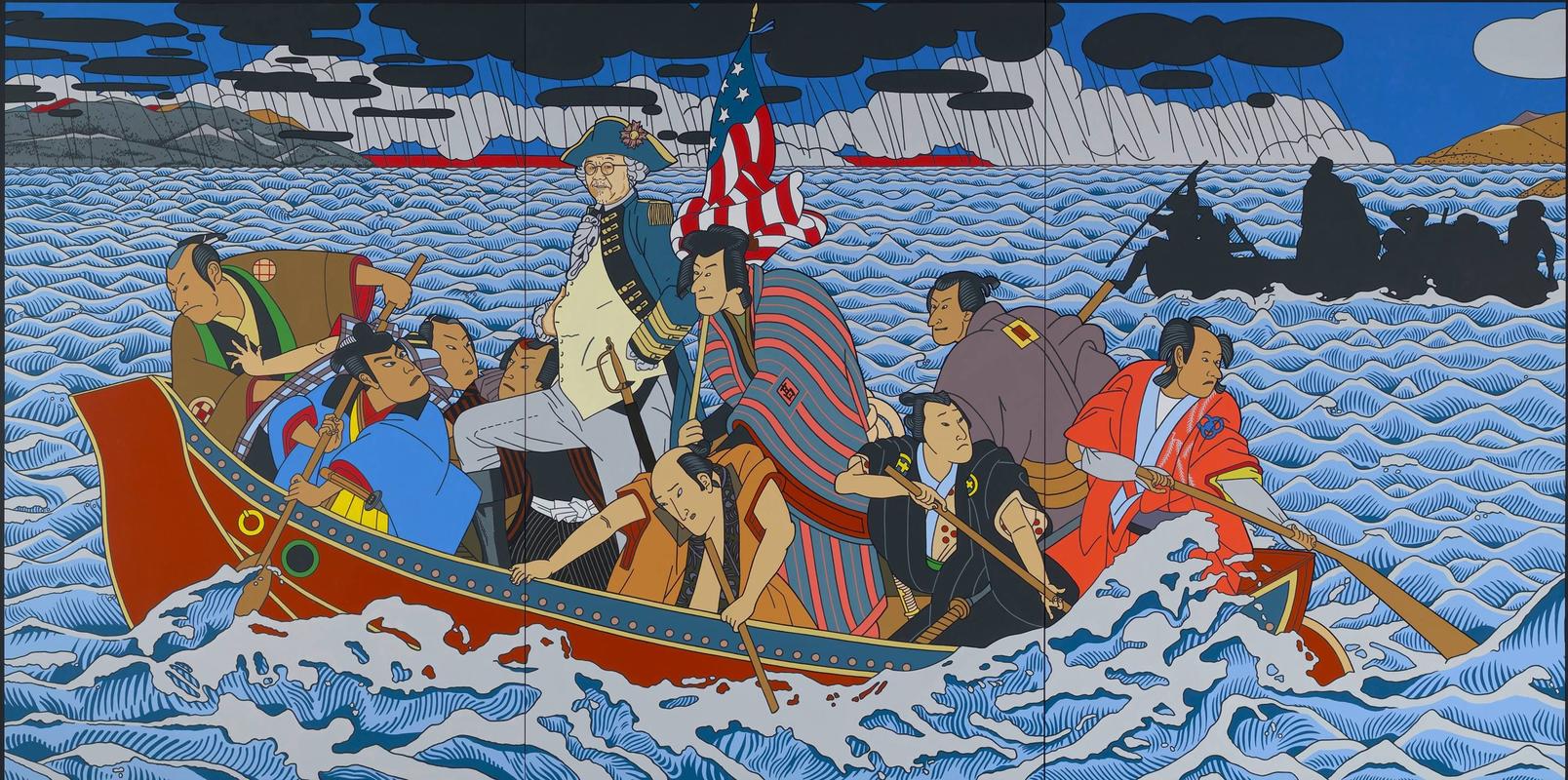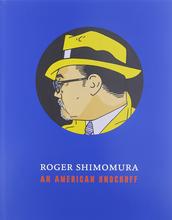Shimomura Crossing the Delaware is a parody of Emanuel Leutze’s Washington Crossing the Delaware in the Met and quite honestly, it’s way less of a history class snoozefest.
The painting started with the thought, “What if George Washington was Japanese American?” and ended as one of his most famous works to date. “Shimomura placed himself as Washington, in the iconic pose, but replaced the Continental army soldiers with Japanese samurai. He also made the Delaware River look suspiciously like the San Francisco harbor, complete with a Hokusai-style boat and Angel Island, which at one point served as the processing center for Asian immigrants. Coincidence? Definitely not. Shimomura comments on his inspiration: “The idea was to place myself as George Washington and hopefully raise all the questions that would go along with it, such as, ‘What if Japanese-Americans were in a position in this country where one might have been George Washington?’ I mean, that is such a stretch to think of that. But I like the absurdity of that extreme.”
The whole military aspect hits close to home for Shimomura as well. He joined ROTC at the University of Washington and later served as an artillery officer in the U.S. Army. And what does he get for his service? He gets questions like, “How do you speak English so well, Roger?” and “What’s you ancestry, Roger?” Good going, America… Shimomura explains his feeling on the matter: “It’s really insulting to a person like myself who spent two years behind barbed wires during World War II, and who served in the military for several years, to be assumed as being a foreigner.” Understandable!
This artwork came from a series inspired by his time in the internment camp. At the time Japanese Americans were put there supposedly for their own protection, as many Americans blamed Pearl Harbor on all Japanese people, even their fellow citizens. But Shimomura recalls the guards of the internment camp facing their guns towards the internees, rather than away from them, which is a funny way of protecting them. “In this portrait, Shimomura presents a platform to discuss Americanism and patriotism and how these two ‘isms’ apply to all Americans across racial and ethnic lines,” which is unfortunately still super necessary.

















Hm, nice information guys, thanks!